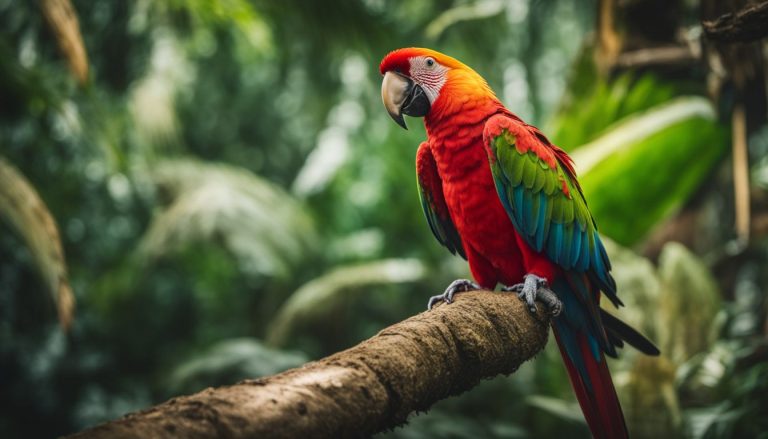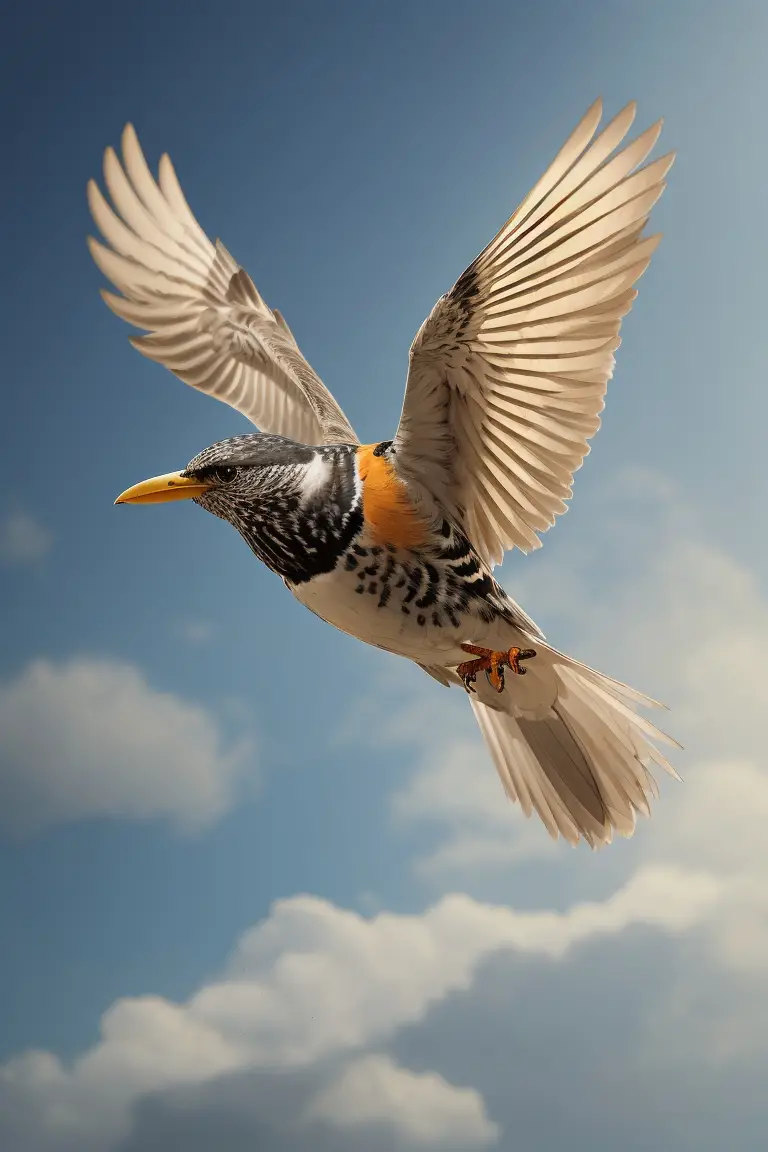Birdwatching is such a captivating pastime. Have you ever found yourself curiously peering through the foliage, wondering about those intricate avian homes nestled in trees or shrubs? That curiosity sparked within me too, leading me on journey to better understand bird nests and their creators.
This comprehensive guide serves as your trusty binoculars into the world of our feathered friends and their architectural marvels – showcasing varied nest types from petite cups to swaying pendulums.
These nests, constructed with innovative techniques honed over eons, work wonders in safeguarding their precious fledglings. Are you set to embark on this thrilling exploration?.
Key Takeaways
- Birds build their nests in various locations, including trees, shrubs, grasses, caves, and man-made structures like buildings and bridges.
- Bird nests serve important purposes such as providing protection from predators and harsh weather conditions, facilitating reproduction by offering a safe place to lay eggs and raise young birds, and ensuring the survival and growth of chicks.
- Different types of bird nests include cup nests that are shaped like bowls and built in trees or shrubs; platform nests constructed on elevated platforms like cliffs or man-made structures; cavity nests found inside tree cavities or holes in buildings; burrow nests dug into the ground or existing cavities; pendulum nests that hang from branches high up in trees; and hanging nests suspended from branches or other structures. Each type of nest caters to specific needs during the nesting process.
Where Birds Build Their Nests

Birds build their nests in a variety of locations, including trees, shrubs, grasses, caves, and man-made structures.
https://www.youtube.com/watch?v=YB9hYzI39yM
Trees
Birds like trees. They make their homes high up in the branches. Eagles, for example, build hard nests and use them every year. You can find other birds’ nests on tree leaves or holes in the trunk.
Sometimes they take over old squirrel dens or woodpecker holes as their own! Trees are safe places for eggs and baby birds to grow up out of reach from many ground predators. Plus, trees offer food and a great spot to sing songs.
So next time you walk by a tree, look up! There might be a bird’s nest hiding above your head.
Shrubs

Shrubs are another common location for bird nests. Some bird species prefer to build their nests in the dense foliage of shrubs because it provides them with protection from predators and the elements.
The thick branches and leaves help to conceal the nest, making it harder for predators to find.
Birds that build their nests in shrubs include sparrows, wrens, and thrushes. They use twigs, grasses, and other plant materials to construct their nests within the branches or at the base of the shrub.
These nests are often cup-shaped or dome-shaped, providing a cozy space for eggs and hatchlings.
It’s important for birders to be observant when exploring shrubby areas as they may come across these hidden gem-like structures nestled among the foliage. Taking note of which birds prefer nesting in shrubs can also provide valuable insights into their nesting habits and behavior.
Grasses

Grasses are another type of location where birds may choose to build their nests. Some species, like sparrows and finches, prefer to construct their nests within the dense vegetation provided by tall grasses.
These types of nests provide excellent protection and camouflage for the bird and its eggs. Grasses can be found in a variety of habitats, including fields, meadows, and prairies. So if you’re out birding in these areas, keep an eye out for any signs of nesting activity among the grasses!
Caves

Caves are one of the locations where birds build their nests. Some species, like barn owls and bats, prefer to nest in caves because they provide a safe and protected environment. These dark spaces shield them from predators and harsh weather conditions.
Caves offer a secure nesting site for birds that need peace and solitude during their breeding season. While not all bird species choose to nest in caves, those that do find them to be an ideal spot to raise their young.
This demonstrates the diverse range of habitats that birds utilize when constructing their nests.
Man-made structures

Birds are resourceful creatures and will sometimes use man-made structures as their nests. They might choose to nest on buildings, bridges, or even in the nooks of human creations.
Some species have adapted well to urban environments and have become skilled at finding suitable spots for nesting in our cities. It’s fascinating to see how birds can adapt and make use of the resources we provide them.
The Purpose of Bird Nests

Bird nests serve several important purposes for birds, including protection, reproduction, and raising their young.
Protection
Bird nests provide crucial protection for birds. They serve as a safe haven from predators and harsh weather conditions. Some nests are built high in trees or shrubs, while others are hidden deep within grasses or caves.
Birds also take advantage of man-made structures like rooftops and birdhouses to keep their nests secure. These carefully constructed homes offer a cozy and protective environment for eggs and young chicks to grow safely.
It’s fascinating how birds instinctively know where to build their nests to ensure the best possible protection for their offspring. Understanding the importance of nest protection can help birders appreciate the incredible lengths that birds go to ensure the survival of their species.
Reproduction

Bird nests play a crucial role in the reproduction of birds. They provide a safe and secure place for birds to lay their eggs and raise their young. The structure and location of a nest are carefully chosen by the parents to ensure the survival of their offspring.
Some bird species build elaborate nests with specific materials, while others keep it simple with just sticks or grass. It’s fascinating to see how each bird species has unique nesting habits and preferences.
Understanding these aspects can give us valuable insights into the reproductive behaviors of different bird species.
Raising young

Bird nests play a crucial role in raising young birds. It’s important to understand how different types of nests provide protection and support for the growing chicks. Some nests, like cup nests, are cozy and well-camouflaged to keep the eggs warm and safe from predators.
Platform nests offer a more open environment that allows parents to easily access their chicks. Cavity nests provide extra security by being hidden inside holes or tree crevices. Burrow nests are underground tunnels where parents create a protected space for their young ones.
Pendulum and hanging nests swing freely away from potential threats on branches or cliffs. Each nest type caters to specific needs during the challenging process of raising young birds, ensuring their survival and growth in a changing world.
Different Types of Bird Nests

Birds build a variety of nests, including cup nests, platform nests, cavity nests, burrow nests, pendulum nests, and hanging nests.
https://www.youtube.com/watch?v=YB9hYzI39yM
Cup nests
Cup nests are one of the most common types of bird nests. They are named after their shape, which resembles a cup or bowl. These nests are often made by small and medium-sized birds like robins and sparrows.
Cup nests are usually built in trees, shrubs, or grasses. The nest is constructed using various materials like twigs, leaves, grass, and even moss. Inside the cup-shaped structure, the birds lay their eggs and incubate them until they hatch.
Cup nests provide protection for the eggs and young birds from predators while allowing enough airflow for ventilation. It’s fascinating to see how these tiny birds create such cozy homes for their growing families!
Platform nests
Platform nests are another type of bird nest that you might come across while exploring nature. These nests, as the name suggests, are built on platforms. They can be found in a variety of locations, such as trees, cliffs, or even man-made structures like buildings or bridges.
Birds that build platform nests include birds of prey like eagles and hawks, as well as herons and certain songbirds. These nests are usually large and sturdy to support the weight of the birds and their growing chicks.
It’s fascinating to see how these birds construct their homes on these elevated platforms using twigs and other materials they find nearby. Such nests provide a safe place for raising young ones and protect them from predators on the ground.
Cavity nests

Cavity nests are created by birds inside tree cavities or holes in man-made structures. These nests provide excellent protection for both the eggs and the young birds. Birds like woodpeckers, chickadees, and owls are known for building cavity nests.
They use their beaks to dig out a hole or find an existing cavity to make their nest. The size of the hole will depend on the species of bird. Some birds even line their nests with soft materials like feathers or moss for added comfort.
It’s fascinating how these small creatures can transform a hollow space into a safe home for their offspring!
Burrow nests
 Birds that build burrow nests are fascinating creatures. They prefer to dig holes in the ground or find existing cavities, like abandoned animal burrows or hollow trees, to make their homes.
Birds that build burrow nests are fascinating creatures. They prefer to dig holes in the ground or find existing cavities, like abandoned animal burrows or hollow trees, to make their homes.
Some examples of birds that construct burrow nests include puffins, kingfishers, and certain species of owls.
These clever birds take advantage of these underground dwellings for protection from predators and the elements. Burrow nests provide a safe environment for raising their young. The narrow entrance also helps keep out larger animals that may pose a threat.
Burrow nest construction can vary depending on the bird species. Puffins, for example, use their bills to excavate nesting tunnels in soft soil or sandbanks near bodies of water. Kingfishers will dig into riverbanks using their sharp beaks.
Pendulum nests

Pendulum nests are a unique type of bird nest that hang from branches high up in trees. They look like little baskets made of twigs and other plant materials, dangling precariously in the air.
Some birds, like orioles and weavers, are known for building these amazing structures. Pendulum nests provide excellent protection for the eggs and young chicks inside because they swing gently with the wind, making it harder for predators to reach them.
These nests are truly a wonder of nature! Remember to keep an eye out for pendulum nests when you’re exploring bird habitats – they’re quite fascinating to observe!
Hanging nests
Hanging nests are a unique type of bird nest that are suspended from branches, twigs, or other structures. These nests hang down like a pendulum and provide protection for the birds inside.
They are often constructed using materials such as grasses, leaves, moss, and even spider webs to secure them to their hanging position. Some bird species that build hanging nests include Orioles and Weaverbirds.
These birds have developed special skills in weaving intricate nests to make them sturdy and safe for their young ones. Hanging nests can be found swaying delicately in trees or shrubs, adding beauty to the surrounding environment.
How Birds Build Nests
Birds gather materials like twigs, leaves, and feathers to construct their nests using various techniques such as weaving, interlocking, and gluing. Curious about the fascinating details of bird nest construction? Keep reading for some amazing insights into the intricate world of avian architecture!
Gathering materials
To build their nests, birds gather materials from their surroundings. These materials can vary depending on the bird species and the location of the nest. Some common materials that birds use include twigs, leaves, grasses, feathers, mud, and even spider silk.
They carefully select these materials based on their specific needs for constructing a sturdy and safe nest.
Birds are resourceful when it comes to finding nesting materials. They may collect twigs and small branches from nearby trees or shrubs. Some birds will also pick up soft items like moss or plant fibers to line the inside of their nests for added comfort.
Feathers are another popular choice as they provide insulation against cold weather.
It’s fascinating to see how different bird species choose unique elements for their nests. For example, some birds incorporate man-made materials such as bits of plastic or string into their constructions.
While this may not be ideal for the environment, it showcases the adaptability and creativity of these creatures.
Construction techniques
Birds use a variety of construction techniques when building their nests. Some birds weave and interlock materials together, like twigs, grasses, and moss. Others use mud or saliva to help hold their nests together.
Some species even make elaborate structures using feathers, leaves, and spider silk. Birds have different ways of shaping their nests too. They may create deep cups or form flat platforms for their eggs to rest on.
And did you know that some bird species build hanging nests that dangle from tree branches? Their construction skills are impressive considering they don’t have hands like us humans!
Nest maintenance
Birds take great care in maintaining their nests to ensure the safety and comfort of their young. They do this by regularly cleaning and reinforcing the nest structure. This involves removing any debris or waste that may accumulate, such as droppings or leftover food.
Birds also add new materials to strengthen the nest, like twigs or feathers. Some bird species even line their nests with soft materials like moss or leaves for added insulation and protection.
It’s fascinating to see how these feathered architects work diligently to maintain their homes for their growing families!
Fascinating Facts about Bird Nests

Bird nests are truly fascinating structures, and here are some interesting facts about them. Did you know that some bird nests can weigh as much as a small car? That’s right! Bald eagles, for example, build large and sturdy nests using sticks, which they use year after year.
Another fascinating fact is that some birds make use of abandoned homes from other animals. For instance, the American robin may choose to nest in an old squirrel or crow’s nest. This shows how resourceful birds can be when it comes to finding suitable places to raise their young.
Research is still ongoing to understand the functions of bird nests fully. Although we have learned a lot about their purpose in protection and reproduction, there is still much we don’t know yet.
It’s amazing to think about how these seemingly simple structures play such a crucial role in a bird’s life.
Different bird species construct different types of nests with unique characteristics. Some birds build cup-shaped nests made of twigs and grasses, while others create platform nests on branches or even hang pendulum-like nests from tree limbs.
The diversity in nest designs is astonishing!
Finally, despite their seemingly fragile appearance, bird nests can be incredibly strong. Even a nest made only of sticks can withstand harsh weather conditions and provide adequate support for eggs and baby birds.
To learn more about the intricate nature of bird nesting habits and explore breathtaking footage showcasing various types of avian homes around the world, I recommend watching an informative video dedicated to this subject.
With so many distinct types of bird nests out there waiting to be discovered by avid nature enthusiasts like us, it’s truly awe-inspiring what these feathered architects can accomplish! Keep exploring and marveling at the wonders of our avian friends’ nesting strategies.
Conclusion
In conclusion, exploring the different types of bird nests can provide fascinating insights into the nesting habits and behaviors of these incredible creatures. From cup nests to cavity nests, each type of nest serves a specific purpose in protecting and raising young birds.
By understanding the variety of bird nests and their construction techniques, nature enthusiasts can deepen their appreciation for avian life and enhance their bird watching experiences.
So next time you’re out in nature, keep an eye out for the diverse array of bird nests that grace our world!
FAQs
1. What is bird nest identification?
Bird nest identification is the skill of finding and knowing different types of bird nests by their shape, location, materials, construction techniques and other features.
2. Why do birds have different nesting habits?
Birds have diverse nesting habits to adapt to their habitats. Their nesting preferences can depend on things like available materials for nest-building or safe sites for laying eggs.
3. Can you tell me more about bird nest architecture?
Bird nest architecture refers to how bird nests are built and structured using various materials in unique shapes and designs based on each species’ needs and behaviors.
4. How does exploring different types of bird nests help nature enthusiasts?
Exploring the variety in bird nesting helps nature fans understand more about birds’ breeding behavior, how they act as parents, their strategies for safety from predators and habitat adaptation methods.
5. Are all bird nests made the same way with similar materials?
No! Birds use a wide range of nesting materials depending on their environment and specific needs – from sticks to grasses or even mud – showcasing an impressive diversity in construction methods across species.
I’m Owen Featherstone, your bird-watching buddy and enthusiast of all things feathered! Armed with binoculars and a notebook, I’m on a never-ending quest to uncover the mysteries of our avian friends. Whether it’s deciphering melodies in a dawn chorus or finding out if hummingbirds ever take coffee breaks, I’m here to share the delightful world of birds with you. So grab your virtual wings, and let’s explore the skies together!






